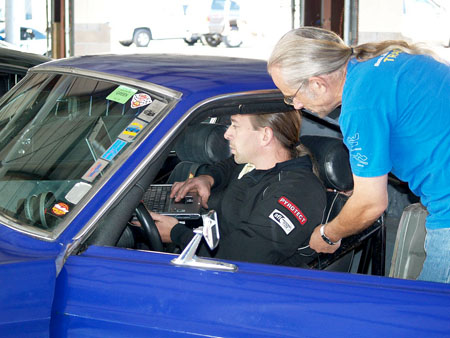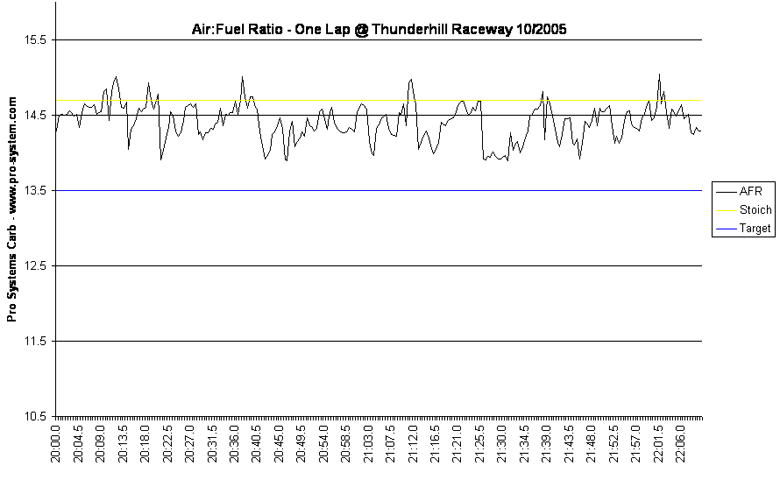A few years ago I designed and built my own wideband O2 controller, allowing me the ability of monitoring the Air:Fuel ratio. The voltage output of the controller is then captured by my own design logger for future download of the data. Over the years I've added channels to capture data from sensors such as pyrometers, potentiometers, and accelerometers.Having the ability to capture data from these sensors allows me to 'see' what is happening with certain parts of the car. Interpreting the data is sometimes a challenge in itself, though almost always useful.The logger is able to capture about two hours of data, four channels wide, up to twenty times per second. I rarely capture data at that rate, as a twenty minute open track session can be an overwhelming amount of data. I usually capture data in .25 to .5 second intervals. |
 |
Air:Fuel and G Force Data:

The above graph shows the Air:Fuel Ratio during one lap of Thunderhill in 2005. I am very pleased with this performance, though a bit on the lean side of my extra safe target of 13.5:1; I don't think it gets much better than this with out a team of people dedicated to my carb! The spikes above the stoich line are lifts off of the throttle, therefore not to be worried about. I am very pleased with how quickly this system settles and how stable it is during acceleration.

This graph (above) is from an event at Thunderhill Raceway on 6/18/04. It offers a view of the lateral G forces acting on the car during one lap of Thunderhill. The negative numbers are Left turns, positive numbers are Right turns. The first negative droop is turn One, the second droop shows some hunting after initial turn in for turn Two. The blue line in this graph is from the O2 sensors voltage output.
Brake Rotor Temps:
These Brake Rotor Temp. logs were taken via IR sensor mounted a few inches away from the left front rotor. Seen here, the brake rotor takes quite a bit of time to 'come up to temp' and once it does, the temp is extremely low. This leads me to believe the rotors are too big, or the pads are not the right choice (different pads used are noted in graph). The Performance Friction 01 Compound used in the above graph are said to be "effective from 167*F and reach 2000*F, optimum operating range is between 860* and 1004*F".
For Comparison:
Above is a logged session from my friend Ray's car. This log also shows quite a long warm up of the brake system, and temps in the 800* + range. This is a 65 mustang using brake cooling ducts, fans in the ducts, 11" rotors and PBR two piston calipers with Performance Friction 01 Pads.

